Seven participants from The College of St. Scholastica in Duluth, Minnesota, traveled to Douglas, Arizona, March 10-16, for an immersion experience with School Sisters of Notre Dame who minister on the U.S.-Mexico border.
The SSND Mission Awareness Program (MAP) offers participants a fresh awareness of our oneness, our interconnectedness and our interdependence while sharing in prayer, community and ministry with the SSNDs. In Arizona, the group will learn more about migrant concerns while exploring life in a diverse border community.
March 10, 2019
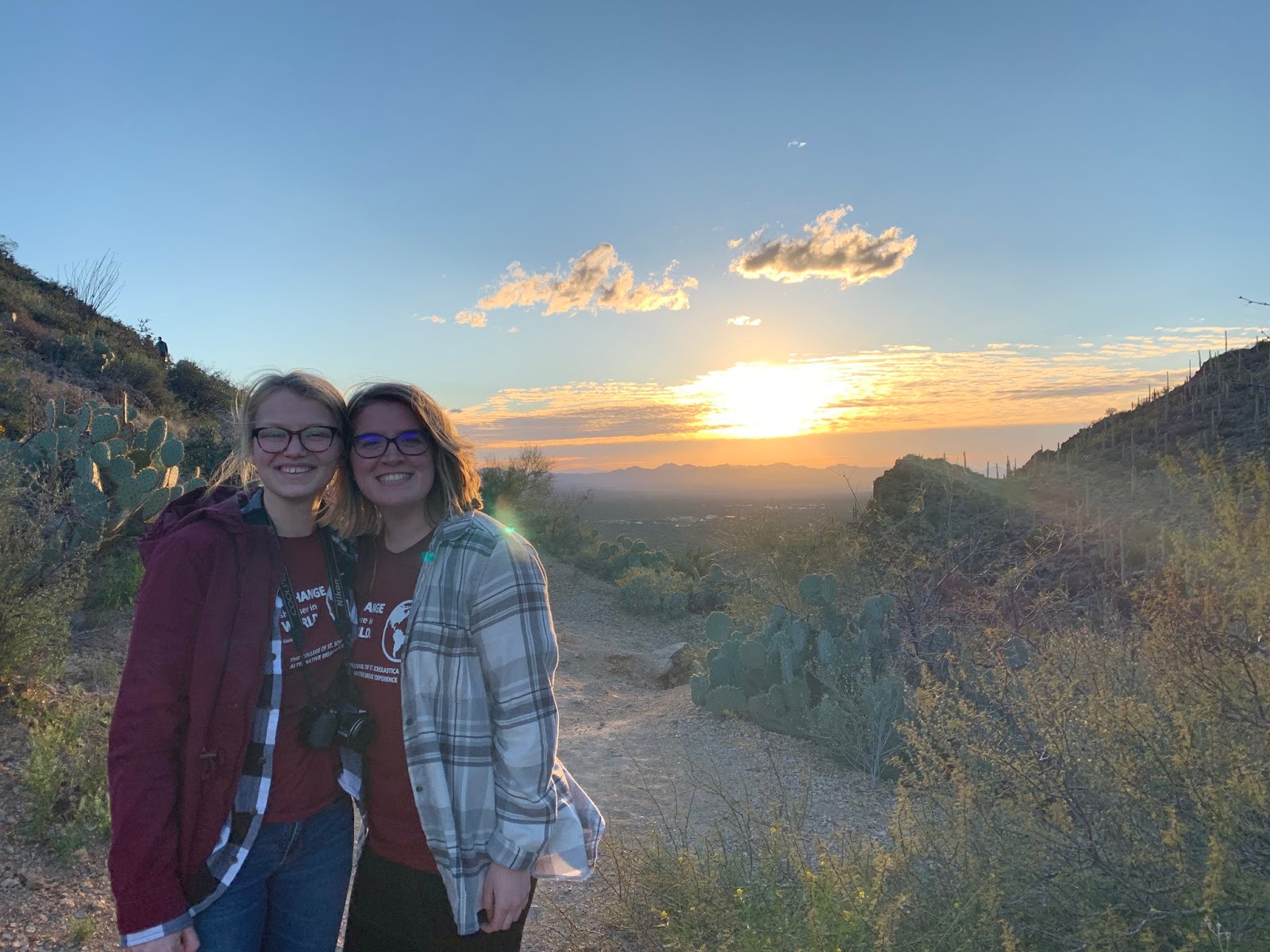
Abigail Blonigen and Meghan Stordahl.
Weather forecasts of freezing rain and several inches of snow cause both anxiousness and excitement for seven women living in Duluth, MN. Excited and anxious to leave the cold, balmy skies of Minnesota, these seven students from The College of Saint Scholastica embark on a journey to Douglas, Arizona.
After a safe, relaxing three hour flight, we arrive at the Tucson Airport and find three Sisters with the School Sisters of Notre Dame excitedly awaiting us. Sister Judy, Sister Lucy, and Sister Helen introduce themselves as our hosts for the week. We wait for our checked bag full of donations and head out into the sunshine and cacti. (I must say, us Minnesota girls were pretty excited to see the sun that we have have not seen in months.)
As we pack the cars and head to our lunch site, I cannot help but admire the beautiful landscape of Arizona. Surrounded by mountains, God’s creation is breathtaking. Very quickly after our arrival in Arizona, our group is immersed in the culture surrounding the border. We eat our lunch in what used to be a Benedictine Monastery. (How fitting, as we are from a Benedictine College.) This building has been set up into a migrant shelter. Migrants seeking humanitarian aid are able to stay in this shelter for a few days while volunteers help them gain what they need to travel to family members living in the United States. It was such an eye-opening experience to see the different aspects of humanity involved with the border problem. I was inspired at how many volunteers and community members of Tucson step up and come to the aid of migrants. Read more of Meghan's reflection here.
- Meghan Stordahl, Sophomore Psychology Student
March 11, 2019
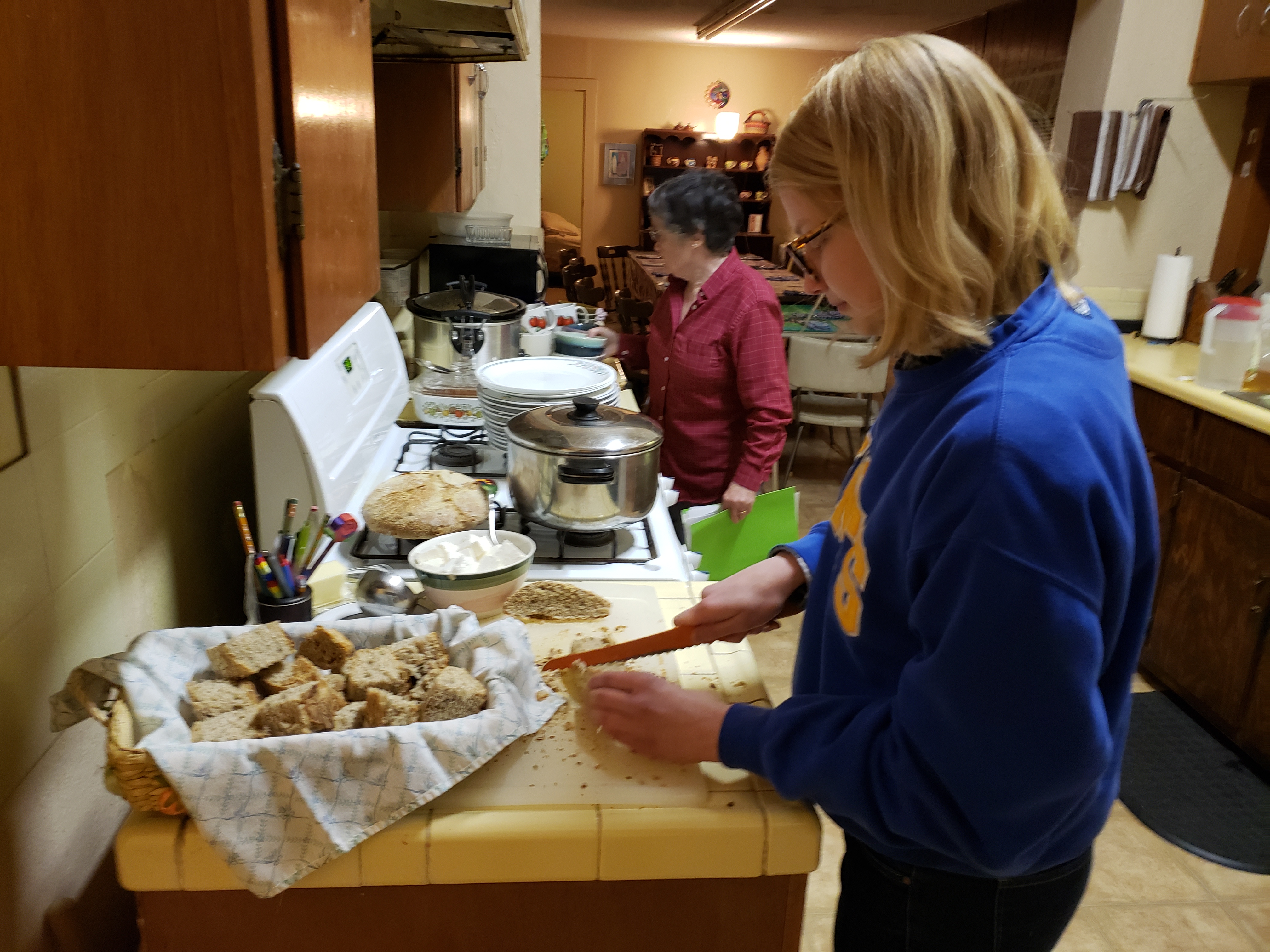
Abigail Blonigen and Sister Helen Jones.
Today was an emotionally draining but immensely impactful day. After breakfast and dropping off our sandwich donations at the refugee shelter, we headed to the Pima County Medical Examiner's Office to learn about what is done with the remains of migrants found in the desert.
Housed in the same building as the Medical Examiner's Office is the Colibrí Center for Human Rights. An intern named Leah gave us a cohesive and informative overview of why there is a crisis at the border and the policies put in place which got us to the point we are at today.
In 1994, the United States government decided to ramp up border security with a process called "prevention through deterrence." With the signing of NAFTA, which destabilized the Mexican economy, the U.S. anticipated more migrants would enter through the southern border. Knowing this would ultimately create more violence overall, the government militarized the points of entry, making migrants more likely to cross through dangerous terrain to reach the U.S.
Inevitably, this has led to countless deaths. Since 1998, Border Patrol has reported 7,216 deaths at the U.S./Mexico border. Because of this, Colibrí formed in 2006 to try to identify remains and notify loved ones of their family member's death. Since then, Colibrí has become a 501(c)(3) nonprofit dedicated to forensics, advocacy, and storytelling. Read more of Abigail's reflection here.
- Abigail Blonigen, senior at the College of St. Scholastica with majors in Spanish, English, and global cultural & language studies.
March 12, 2019
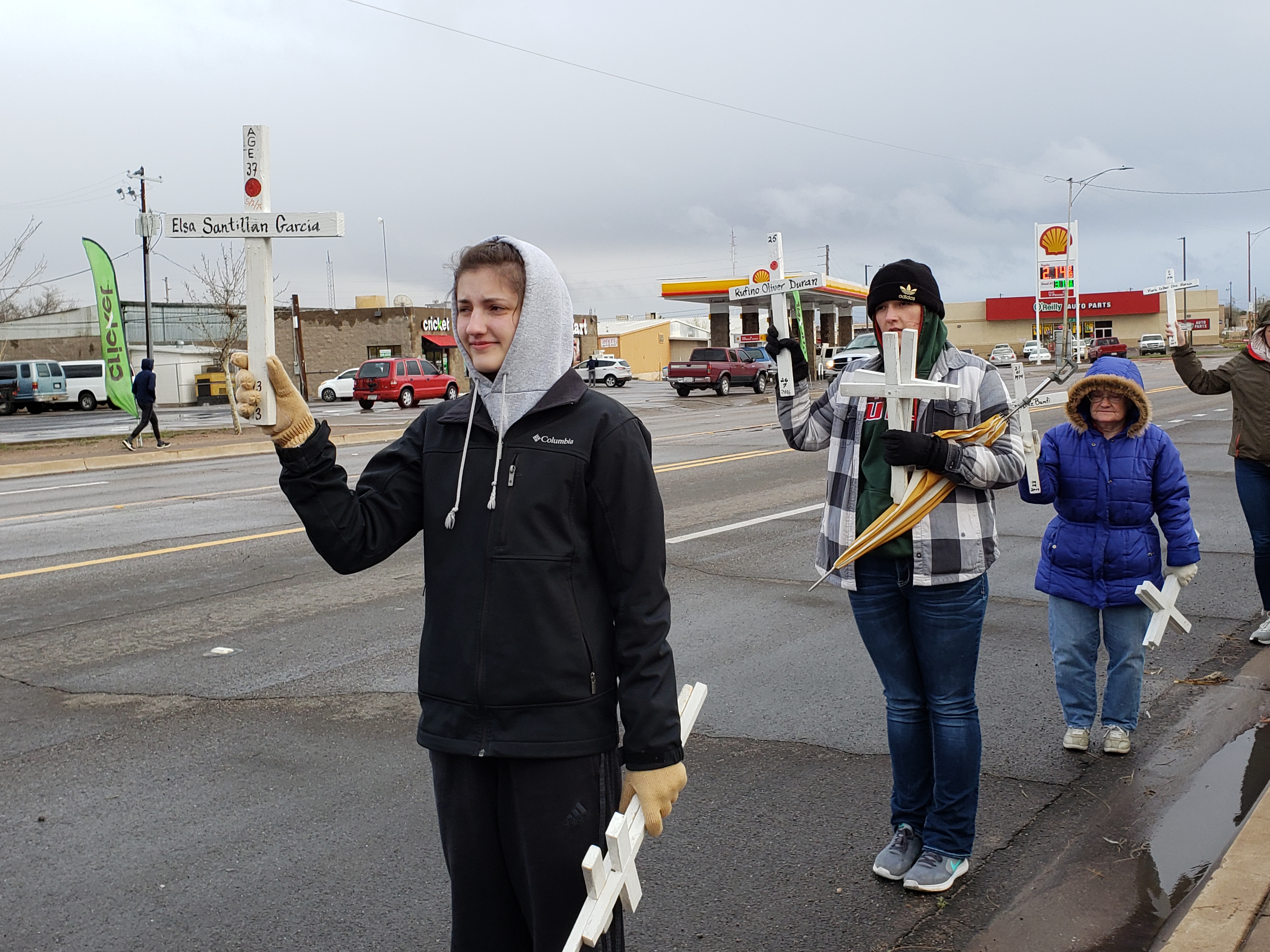
Lily Wabik and Marissa Bober.
Today, the girls apart of the campus ministry were involved in many meaningful and informational activities within the city of Douglas. First off, in the morning we were shown a viewing of the movie "Dayani Cristal". Within that movie, we were able to really witness one immigrants journey towards America and how it ended up in his death. He displayed courage and bravery through his initial decision to come to America and through his actions along that journey. We were able to see how the end of one person's life can have such a big affect not just on their family members, but their communities as well. So many individuals joined together to celebrate this man's life and remember him for who he was. The end of the movie was personally one of the hardest parts when we found out the meaning behind the title. "Dayani Cristal" is the name of this mans youngest child along with his two other children that he left behind when he died. That hit me hard just thinking personally how I would be affected by the death of my father. Our second activity of the day was going out to see the wall in Douglas. It was hard to look at the wall and realize that many people have put their lives at risk trying to cross it and get away from the border patrol. Read more of Lily's reflection here.
-Lily Wabik, Freshman Nursing Student
March 13, 2019
 We started our day early with a quick breakfast on the go. We had places to go and people to see. We were headed to Ajo, Arizona. We stopped at a little mall outlet on the Tohono O'odham Indian Reservation. We meet one of the sisters' Navajo friend to pick up lunch. She graciously made us beans and fried bread. She also had time to tell us some stories about her interactions with Board Patrol. Before we left the mall outlet, we made another friend, a dog, who didn't trust us to get close enough to pet her. Read more of Marissa's reflection here.
We started our day early with a quick breakfast on the go. We had places to go and people to see. We were headed to Ajo, Arizona. We stopped at a little mall outlet on the Tohono O'odham Indian Reservation. We meet one of the sisters' Navajo friend to pick up lunch. She graciously made us beans and fried bread. She also had time to tell us some stories about her interactions with Board Patrol. Before we left the mall outlet, we made another friend, a dog, who didn't trust us to get close enough to pet her. Read more of Marissa's reflection here.
-Marissa Bober, Freshman Biology Student
March 14, 2019
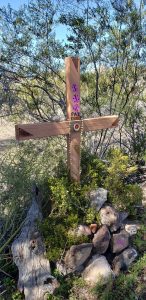 We started the morning with hot breakfast and coffee at Gayle and Don's house, which was amazing. We loaded up Gayle's Jeep and truck with water, food, cushions, and other supplies. A bunch of us sat in the back of the truck (a normal Minnesota thing). We drove into the desert, crossing huge ditches and nearly getting hit by various cacti. I'm shocked no one puked... We visited the grave of Michelle, a 16 year old migrant who died crossing the desert only a few miles from Ajo. We took a lot of time to reflect, write, paint, and gather rocks and flowers for Michelle's cross. We were encouraged to think about what we were doing at the age of 16. Read more of Ali's reflection here.
We started the morning with hot breakfast and coffee at Gayle and Don's house, which was amazing. We loaded up Gayle's Jeep and truck with water, food, cushions, and other supplies. A bunch of us sat in the back of the truck (a normal Minnesota thing). We drove into the desert, crossing huge ditches and nearly getting hit by various cacti. I'm shocked no one puked... We visited the grave of Michelle, a 16 year old migrant who died crossing the desert only a few miles from Ajo. We took a lot of time to reflect, write, paint, and gather rocks and flowers for Michelle's cross. We were encouraged to think about what we were doing at the age of 16. Read more of Ali's reflection here.
-Ali Kruger, Freshman Psychology & Health Humanities Major
March 15, 2019
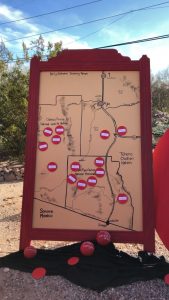 Today, we woke up early to visit an art exhibit to create a visual of all of the deaths that have occurred in the desert as migrants walked through. It was very touching and served as another reminder of all of the deaths that have truly occurred and all of the other deaths that are still yet to be found in the rough terrain.
Today, we woke up early to visit an art exhibit to create a visual of all of the deaths that have occurred in the desert as migrants walked through. It was very touching and served as another reminder of all of the deaths that have truly occurred and all of the other deaths that are still yet to be found in the rough terrain.
We then had a great breakfast with Gayle and Don, and packed up for another day in the desert. Today, we were planning on making 6 or 8 water drops, where we would put water and beans in the desert in hopes that the migrants walking through will find them. We accomplished very many things in the desert today including; walking 6 miles, putting out around two dozen gallon jugs of water, putting out around 15 cans of beans, and creating a beautiful community within all of us hiking. One of the most disheartening sights we saw were the vandalism of some of the water jugs at a particular water drop, we saw at most 20 water jugs completely slashed and ruined of clean water!! Read more of Nicole's reflection here.
-Nicole Campbell, Freshman Nursing Student
